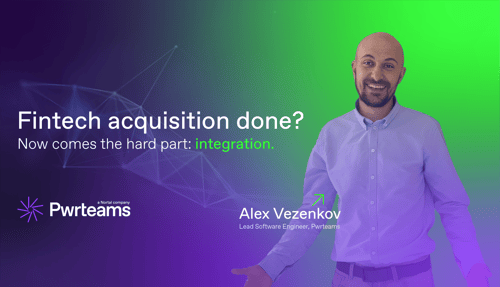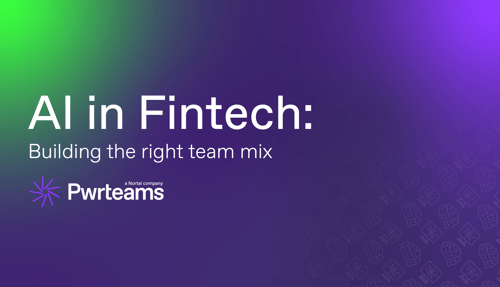Benefits of Moving to Microservices Architecture

As the adoption of microservices architecture is increasingly becoming popular, the major concern for every organization before joining the bandwagon is: what’s in it for us? Is it really worth it? What sorts of problems can it solve? And how can we get it right? Let’s find out together!
What Are Microservices?
Microservice architecture, also referred to as microservices is a decentralized approach to building and deploying applications. In other words, it’s a service-oriented architectural style that structures an application as a suite of modular services. That means each module within the software is independently deployable and can be written in a different language. In this case, the components are loosely coupled, one of the significant characteristics of this architecture.
With microservice architecture, Separate developer teams can work on the same application using different approaches. Microservices present a more agile and flexible approach in contrast to monolithic architecture whereby individual components of an application are not autonomous at code-level but are built together as one system.
Why Microservices?
Although microservices has won the hearts of many, the debate over monolithic architecture and this emerging alternative is still far from over.
When using monolith architecture, software components are interdependent, meaning a change to one affects all the modules. Developers have to rewrite the entire solution to effect changes to the application. Such constraints make it challenging to scale applications. That means a growing business would lose a lot in time and money to effect a few software changes.
This explains why some of the big names like Netflix, Amazon, and Uber made the move from a monolith architecture to microservices to take up architecture more suitable to their expanding businesses.
The Benefits of Using Microservice Architecture
For companies choosing to go the microservices way, the main benefits include the following.
Extensibility
Microservices are organized around business capabilities. They provide applications with the extensibility to support ‘hooks’ for new functionalities, interfaces, devices, input types, etc. As new technologies become mainstream, you will be in a better position to add more functionality to your system.
Scalability
Scaling your application up or down is easy when working with microservices as the architecture is based on small, independently versioned components. The requirements for each scalable customer-focused service can be met easily. Thanks to the isolation provided by this architecture, applications will continue functioning correctly, even through significant changes. This ability to scale well works to a great advantage for companies that work with multiple platforms and devices. Your software will be able to deal with a growing user base and additional data efficiently.
Maintainability
In microservices, applications are easier to maintain and test too. If you are working on a large application, utilizing microservices will make it easier to manage. That is because each service operates its own database and can be rebuilt, redeployed, and managed separately. This is also very alluring to companies that work with global or distributed teams. Developers can work more independently, making and executing technical decisions more quickly. Automation of testing and deployment and the continuous delivery software development process are also part of the appeal of microservice architecture.
How to Get Started
Once you decide to move to microservices, you have to proceed with caution. Here are some tips for making the migration as smooth as possible.
- Planning
As with any technology decisions, making considerations based on your business objectives is a crucial part of the planning process. For smaller businesses, the common trend is to start off using traditional monolith architecture. As the company starts to run more processes, microservices are adopted to keep up with the demand, automate, and simplify management.
- Strategy and methodology
Put together a team with the data modeling, asynchronous programming, and API development skills essential to the task ahead. You can assign small developer groups to work as agile and self-organizing teams. This will help drive a short delivery time for the task at hand. Thankfully, developers have the freedom to use different coding languages and frameworks for the project, so this is not a limiting factor.
- Risk Mitigation
Minimize the risk of losing your data or breaking functionality at every step of your application migration. Your first step will be to reroute traffic to the freshly minted microservice. After that, transfer corresponding data tables from your application database onto the new database for the service. Such small logical separations are a great place to start as they mitigate unnecessary risks. You can repeat the process until all the services you want are on microservice architecture are up and running. You should also consider using Application performance management tools to monitor your microservice architecture.
The goal, after all, is to reduce silos in exchange for greater flexibility and enable continuous improvement. You can start making modifications on the new services right away. It can all be achieved one step at a time.
How We Can Help
pwrteams offers a large number of services that support growing businesses to achieve their goals. Our expertise in a microservice architecture is tried and tested. The growing number of happy clients whose applications are now more extendable, scalable, and maintainable speaks to this. You can rest assured our world-class teams of experts will help you make your applications the best version of themselves for your benefit. You can view the details of one of the recent case studies below.
The ETwater success story: Microservice architecture for a Cloud-based platform
Like many big companies today, the engineering firm ETwater decided to turn to microservices to solve the limitations of monolith infrastructure. The goal was to create a unique microservice architecture for a Cloud-based platform water-irrigation-system. ETwater was able to achieve this by partnering with us here at pwrteams.
The ETwater platform
ETwater is an engineering firm based in the USA. It’s part of the Jain Irrigation company and aims at optimizing water consumption. Over the past 15 years, the company has worked with numerous prominent businesses, municipalities, and HOAs. ETw monolith architecture ater also boasts patented technology for processing big data to enable predictive watering schedules based on environmental factors such as weather, soil, and the plant type as well.
As a pioneer in smart irrigation, it was only natural that ETwater would need to scale its system to serve the growing number of customers. The ETwater solution, a cloud-based platform compiles site-specific data from environmental sources and weather provider Accuweather in order to come up with daily landscape watering schedules. These schedules help customers keep their landscapes green based on an analysis of the plant types, soil composition, and other decisive factors needed to reduce overwatering. ETwater uses technology that includes, Java/Spring, PHP/Symfony2, JavaScript, Backbone.js, Python/Keras/Caffe, XGBoost, MongoDB, ELK, RabbitMQ, Amazon, AWS, Git, and JIRA.
Scaling a monolithic application presented several challenges that made it difficult to have a continuously scalable solution.
The Strategic Partnership That Made It Happen
The company’s relationship with our company spans back to 2014 when we were tasked with transitioning the ETwater platform from monolith architecture to microservices. The company’s previous collaboration with our services, such as the dedicated team and mobile lab had assured them they were in safe hands.
It was also this partnership that paved the way for the ETwater platform to be deployed on Amazon Cloud. our developers were responsible for designing the architecture and developing the irrigation platform’s core system. A dedicated team from pwrteams, comprising a dozen technology experts, software developers, a UI designer, project manager, and data scientist came together to tackle the transition of ET Water from a monolithic to a microservices architecture.
The Results
The project was a great success, and the results enabled so much more scalability for the ETwater application. With a new platform in place, ETwater’s enterprise account holders were advised to transition their water management there. Today, the system manages water flow through controllers, and one of the most notable improvements these clients witnessed was a 30-50% increase in water savings.
The platform’s overall build and development time was minimal and enabled the following in ETwater’s platform:
- Automatic adjustments in site-specific irrigation scheduling through the integration of data science, machine learning, and predictive analytics
- Simpler client group and account management and a more streamlined user onboarding process
- Easier integration with the local engineering and IT infrastructure of clients
- Seamless upgrades for new customizable features for clients
- Creation of specialized computer vision and mobile (native and hybrid) applications
Over to you
It’s critical that you find the architecture most suited to your business goals. This includes taking into account the costs and your vision for the future. Thanks to our talented developer teams, you won’t have to go through it alone. Reach out to our experts in order to take your applications to the next level. You will find everything you need from the evaluation process, development, and deployment.
Make your move now and carve your path to greater productivity while avoiding the common pitfalls of monolith architecture.
READ ALSO
Write your own
success story
with Pwrteams!
Share your details in the form, tell us about your needs, and we'll get back with the next steps.
- Build a stable team with a 95.7% retention rate.
- Boost project agility and scalability with quality intact.
- Forget lock-ins, exit fees, or volume commitments.


